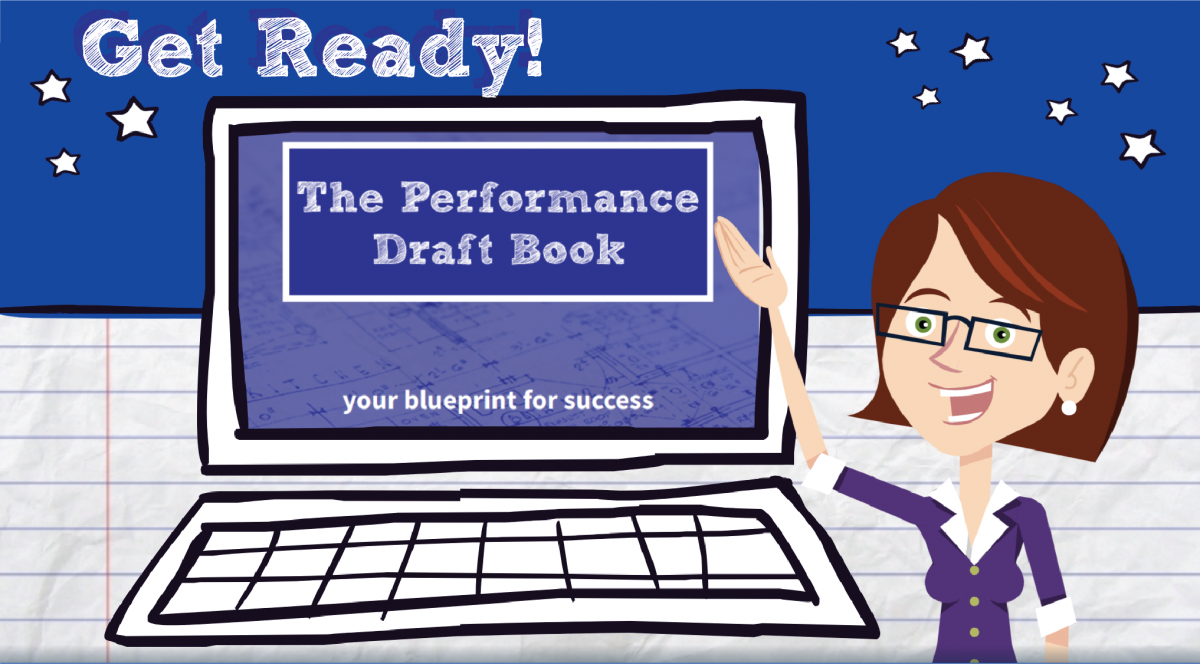 The new online Performance Draft Book is off to a great start. We’re now in the period during which you should be having a performance appraisal meeting with your supervisor. We thought this was a good time to check in with HR Performance team members Linda Lefever and Tarah Cicero (seen at left and center in photo with Mythreyi Sekar) to see what’s new and what’s coming up for the 2019 performance year.
The new online Performance Draft Book is off to a great start. We’re now in the period during which you should be having a performance appraisal meeting with your supervisor. We thought this was a good time to check in with HR Performance team members Linda Lefever and Tarah Cicero (seen at left and center in photo with Mythreyi Sekar) to see what’s new and what’s coming up for the 2019 performance year.
THE SPOT: To prepare staff and supervisors for the new online Performance Draft Book, you offered in-person and online training sessions, and you also provided video and print guides to the process as well. Did employees take advantage of these opportunities?
Tarah Cicero, Learning and Development Specialist (TC): Yes, in a big way! Nearly one thousand employees visited the HR website page that contains the downloadable user guides. Our process overview videos were viewed more than 1,300 times. And 295 employees attended our webinars and classroom trainings. Given that we have about 1,200 staff here at Lehigh, we think we reached just about everyone with some aspect of our materials.

THE SPOT: Now that we’re in the performance appraisal period, what are some of the things employees should know about how the online tool works?
Linda Lefever, HR Associate, Performance and Workplace Learning (LL): There are a few minor differences that come along with moving from paper to online. With the paper tool, a supervisor could choose to either finalize their evaluation and then hold a performance appraisal meeting or meet before finalizing the evaluation. With the online version, if they choose to meet before finalizing the evaluation, they will need to show the evaluation to their employee on the computer screen, because it won’t be shared with the employee automatically until it is completed.
Now, if a manager finalizes the evaluation and then realizes they need to change or add something, they can contact us and we can pull the form back so they can change it.
TC: Keep in mind that can only happen if the employee hasn’t also marked the form complete by clicking “I acknowledge.” Once both have marked it complete, it’s done and it can’t be pulled back to be revised by a supervisor.
THE SPOT: So, when a supervisor marks the evaluation complete, it moves to the staff member for a final review. Before they mark it complete, do they have one more chance to weigh in?
LL: Yes. If you want to do that, don’t click “I Acknowledge” right away. Instead, you can use the “shared” comment option to add more information about your accountabilities, goals, and success factors. Shared comments are visible to the manager.
Sometimes an employee wants to provide a comment because they disagree with a supervisor’s assessment of an aspect of their performance. That’s certainly fine, but we like to recommend that the employee give thought to how to write a comment that is fact-based and emotion-free. It’s important that when you’re expressing your concern you don’t make assumptions about your supervisor’s intentions and instead just present what you consider to be the facts of the matter.
It’s also a good idea to write your comments in a Word or Google document first and then maybe sleep on it. When you come back to work the next day, take a look at it again and see if having removed yourself from the emotion of the moment might change how you would phrase things.
Judy Zavalydriga and I are available to help any employee who might be looking for help in crafting such responses. Just give us a call or drop us an email.
THE SPOT: So, with regard to the ratings themselves, what’s new?
TC: Well, the first thing folks will notice is that the new tool uses stars instead of a numerical rating. The performance levels and descriptions are the same as those we’ve used for years, though, so it’s just a matter of translating numbers into stars. They have the same meaning. Individual contributors (staff members who are not supervisors) receive star ratings for accountabilities, goals and core success factors. Supervisors also receive a rating on managerial success factors.
LL: Calibrated overall ratings are something new as well. Since there are no “half star” ratings permitted in the system, a manager must choose the lower or higher star rating. As a result, the overall rating might average out higher or lower than a supervisor might want.
To address this, managers could consider giving each category (accountabilities, goals, success factors) a weighting. That might be helpful in tipping the final overall rating in one direction or the other.
What’s nice about weighting is that it can vary from year to year. For example, while my key accountabilities are always important, this year, it’s possible my goals were the most important part of my overall performance because I had a big project with crucial deadlines to meet. How I performed in that aspect of my work would take precedence over some of the day-to-day aspects of my job for that year. So my goals should have a higher weighting in my overall rating.
THE SPOT: So, what should staff and managers be thinking about as we move into the 2019 online Performance Draft Book process?
LL: To give everyone a chance to complete the 2018 performance process, we won’t launch 2019 forms until the middle and end of March. Then, each quarter (every three months), you will get email reminders from the system to prompt you to make notes in the tool and meet with your supervisor.
TC: It’s a good idea to have a quarterly meeting with your supervisor that is focused on performance instead of just the usual everyday discussions you might normally have. That includes talking about your career goals and career enrichment or professional development opportunities. Also, you can always go into the tool and make notes in your online journal which you will see on your home page in the system.
THE SPOT: Any closing thoughts on the performance process in general?
LL: The completion of the Draft Book online process is important, not only for employee feedback but also for the purpose of the merit increase process. Managers who meet the Draft Book deadline and follow the guidelines established in the February 5, 2019, email message from Pat Farrell and Pat Johnson demonstrate the important connection between performance and the merit process.
Although we’re using a new online tool, our philosophy of performance management really remains the same at Lehigh. We want to encourage managers and staff to have regular conversations so employees get frequent feedback. You and your supervisor should be on the same page with regard to your performance as the year progresses. When this is the case, there shouldn’t be any surprises when next year’s performance appraisal rolls around.
